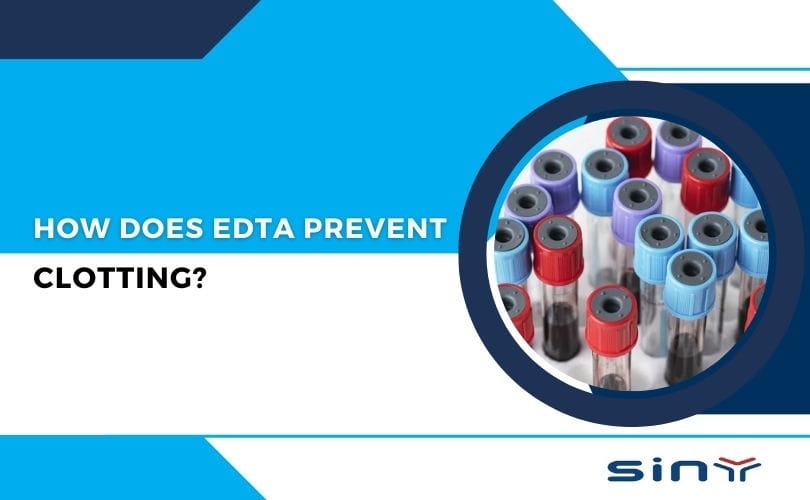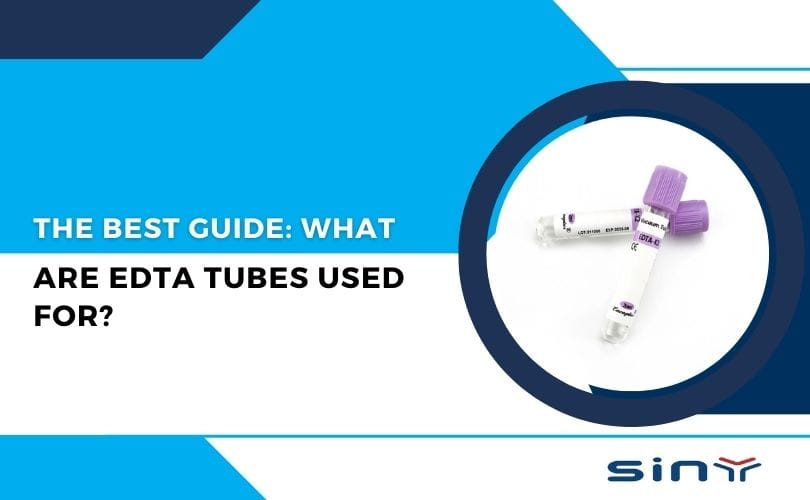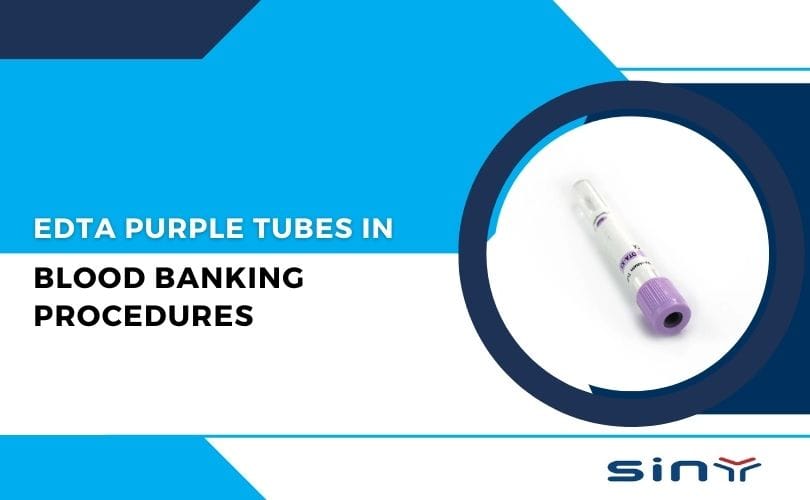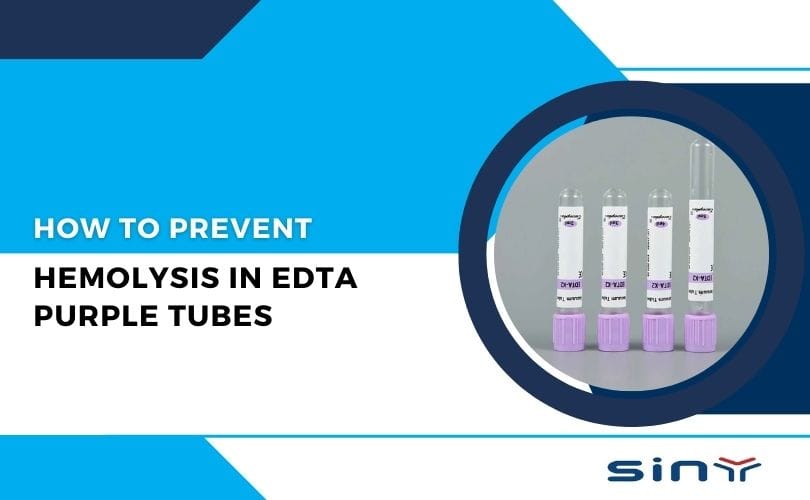Blood clotting is a natural process that prevents excessive bleeding when blood vessels are injured. However, in medical and laboratory settings, preventing clotting is essential for accurate diagnostic testing. EDTA (Ethylenediaminetetraacetic acid) is widely used as an anticoagulant in blood collection tubes to ensure blood samples remain liquid for analysis. This blog explores how EDTA prevents clotting, its mechanism of action, applications, and best practices for use.
What is EDTA?
EDTA is a synthetic amino acid that binds to calcium ions, which are essential for the coagulation process. It is commonly used in EDTA tubes, such as the purple-top EDTA tubes, to collect blood samples for hematological tests. EDTA’s ability to chelate calcium ions makes it an effective anticoagulant, ensuring blood samples remain unclotted for accurate laboratory analysis.
For more information on EDTA tubes, visit EDTA Tube.
How Does EDTA Prevent Clotting?
EDTA works through one simple but powerful mechanism: calcium chelation.
Calcium ions (Ca²⁺) trigger and support nearly every step of the clotting cascade. When EDTA grabs calcium, it keeps it bound so tightly that it becomes unavailable for clot formation.
Here’s the chain reaction:
Blood enters the tube
EDTA instantly binds calcium
Coagulation factors can’t activate
Platelets lose their ability to clump
No fibrin is formed
Blood remains fluid and analyzable
Because the binding is so strong and fast, EDTA is considered one of the most reliable anticoagulants in hematology.
To explore additional details about how EDTA tubes keep blood unclotted, you can check
How EDTA Tubes Prevent Blood From Clotting —
Why Calcium Is Essential for Clotting
Every major clotting factor pathway—intrinsic, extrinsic, and common—requires active calcium ions.
Calcium supports:
Platelet activation
Conversion of prothrombin → thrombin
Formation of fibrin mesh
Stabilization of clot structure
Activation of clotting enzymes
Without calcium, the proteins responsible for clotting stay inactive. The body has no backup pathway, which is why EDTA works so effectively.
EDTA Prevent Clotting because calcium chelation completely shuts down these steps.
Understanding EDTA’s Molecular Action
EDTA has four carboxyl groups and two nitrogen atoms that act like hooks. These hooks wrap around calcium and form a stable, non-reversible bond.
Once calcium is chelated:
Platelets stop aggregating
Prothrombin activation halts
Fibrin cannot form
Coagulation pathways shut down
This is why EDTA is the top choice for Complete Blood Count (CBC) tests.
If you’d like to explore actual EDTA tube products, visit:
https://www.edtatube.com/products/
https://www.edtatube.com/product-category/edta-tube/
EDTA Separation Gel Coagulation Tubes
Some EDTA tubes contain a separation gel that facilitates the separation of plasma from blood cells. These tubes are ideal for tests requiring plasma samples, such as chemistry panels and immunoassays.
Discover more about these tubes at EDTA Separation Gel Coagulation Blood Collection Tube.
How EDTA Tubes Are Manufactured
Inside each tube, only a tiny amount of EDTA is present. This coating is carefully calibrated so the entire sample is anticoagulated without altering cell morphology.
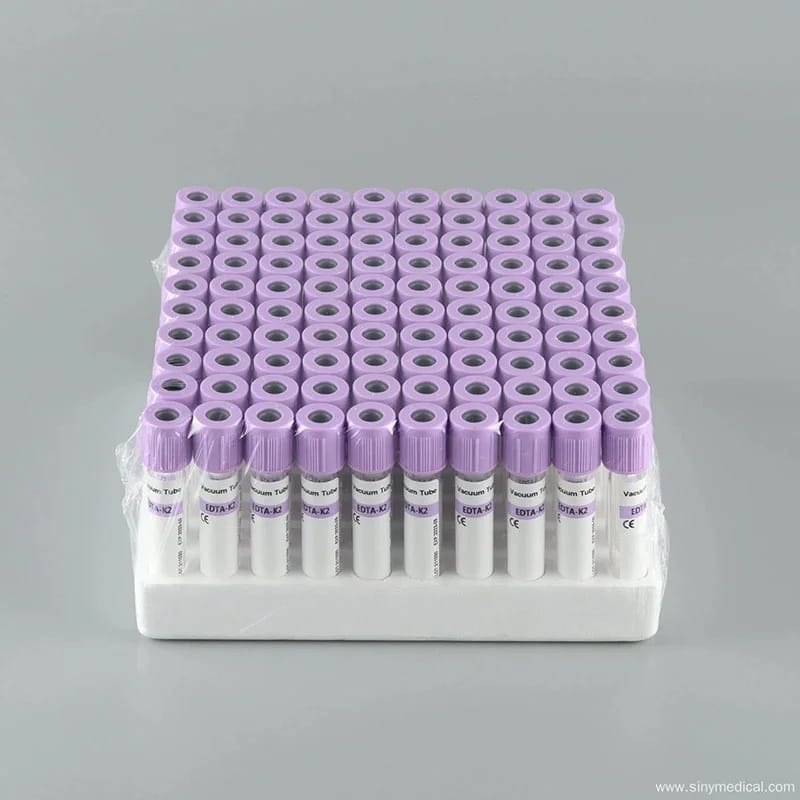
Manufacturing steps involve:
Precision EDTA dosing
Coating internal tube walls
Vacuum sealing
Sterilization
Leak and fill-volume quality checks
To see EDTA tube options in detail, explore:
How to Use EDTA Tubes Properly (2025 Updated Guide)
Correct handling is essential. Poor technique can cause clotting, hemolysis, or inaccurate CBC results.
Full instructions here: Use EDTA Tubes Properly
Step-by-Step Proper Use
1. Fill the tube to the marked volume
Underfilling changes the blood-to-anticoagulant ratio.
2. Gently invert 8–10 times
Not shaking—just slow inversion.
3. Avoid delays
EDTA acts immediately, but the sample still needs timely mixing.
4. Store upright at room temperature
No heat exposure. No freezing.
5. Analyze within guideline time
Different analyzers have different requirements.
Preventing Hemolysis in EDTA Tubes
Hemolysis destroys red blood cells and ruins hematology tests.
A helpful detailed guide is here:
Common causes include:
Using too small a needle
Forcing blood through a syringe
Shaking instead of inverting
Underfilling tubes
Excessive tourniquet time
Correct technique preserves cell shape and prevents false lab readings.
Anticoagulants: Why Choose EDTA?
While EDTA is preferred for hematology, other anticoagulants are necessary for different types of laboratory tests. Understanding these differences highlights EDTA’s unique suitability.
| Anticoagulant | Mechanism of Action | Primary Use Case | Advantages of EDTA Over This |
| EDTA ($\text{K}_2/\text{K}_3$) | Chelates $Ca^{2+}$ (calcium) ions. | Hematology (CBC, Blood Smear) | Superior preservation of cell morphology. |
| Sodium Citrate (Light Blue Top) | Chelates $Ca^{2+}$ (calcium) ions. | Coagulation Studies (PT, PTT) | Citrate is diluted; EDTA is ideal for concentrated cell analysis. |
| Heparin (Green Top) | Potentiates Antithrombin III, inactivating Thrombin. | Chemistry, Immunology (Plasma) | Heparin can interfere with cell staining and cause cell aggregation. |
| Potassium Oxalate | Precipitates $Ca^{2+}$ as insoluble calcium oxalate. | Older glucose/chemistry tests (now largely replaced) | Oxalate causes significant cell shrinkage/crenation and artifacts. |
The Citrate-EDTA Difference
Both citrate and EDTA prevent clotting by calcium chelation. However, sodium citrate is used in a 9:1 blood-to-anticoagulant ratio, which is a diluted sample. This dilution is necessary for accurate coagulation factor assays. EDTA is used for undiluted whole blood analysis, which is what is required for counting and analyzing blood cells. Furthermore, for coagulation studies, the inhibition by citrate is reversible (by adding excess calcium), allowing for the initiation of the clotting cascade in vitro at the required moment. EDTA’s chelation is generally considered irreversible for standard laboratory purposes, making it unsuitable for tests requiring clot initiation.
Conclusion
EDTA plays a vital role in preventing blood clotting, ensuring accurate and reliable laboratory results. Its ability to chelate calcium ions makes it an indispensable anticoagulant in medical diagnostics. By understanding its mechanism and following best practices, healthcare professionals can optimize the use of EDTA tubes for various tests.
For any inquiries, feel free to Contact Us.
FAQs
Q1: Why are EDTA tubes always the color purple (or lavender)?
The purple or lavender top is a universal, standardized color code established by the International Organization for Standardization (ISO) and the Clinical and Laboratory Standards Institute (CLSI). This color is a visual indicator for all phlebotomists and lab technicians that the tube contains the EDTA anticoagulant (either K2EDTA or K3 EDTA and is specifically intended for hematology testing and whole blood analysis. The standardization prevents confusion and ensures the correct test is performed on the correctly preserved sample.
Q2: Can I use EDTA blood for chemistry tests?
Generally, no, you should not use EDTA blood for most standard chemistry tests potassiumor calciumevels. There are two main reasons: First, EDTA is a potassium salt K2 EDTA or K3 EDTA, and its presence will introduce a massive, falsely elevated potassium level into the sample, making the result clinically meaningless. Second, EDTA works by removing calcium; therefore, any test that measures calcium levels will show a falsely decreased or zero value. Chemistry tests are typically performed on serum (Red, Gold, or Tiger Top tubes) or heparinized plasma (Green Top tubes).
Q3: What happens if I underfill an EDTA tube?
Underfilling an EDTA tube is a serious pre-analytical error. Since the amount of EDTA in the tube is fixed, an underfilled tube means the final concentration of EDTA in the blood sample is too high. This excess EDTA causes two main problems: it will draw water out of the red blood cells, causing them to shrink (crenate), leading to a falsely low hematocrit and MCV result. It also increases the risk of cell artifacts that can interfere with the differential count. Always fill the tube to the indicated line or vacuum draw volume to maintain the correct EDTA to blood ratio.
Q4: Is the clotting process permanent if EDTA is used?
Yes, for standard laboratory testing, the EDTA chelation is considered irreversible, meaning you cannot simply add calcium back to an sample and expect a normal, functional clot to form that mimics the in vivo process. This is the key difference when compared to sodium citrate, where the anticoagulation is designed to be reversible by adding calcium to initiate coagulation tests like . The powerful binding of EDTA makes the calcium ions practically unavailable for the complex enzymatic reactions required for accurate clotting studies.
Q5: Where can I find reliable, high-quality EDTA tubes?
To ensure the accuracy and integrity of your diagnostic samples, it is essential to use tubes that adhere to strict manufacturing and quality standards. You can explore a wide range of specialized EDTA blood collection tubes on the website and specifically check out the different types available in the EDTA tube category .

